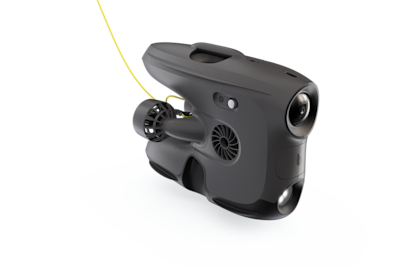Marine research
The ocean is the source to resources such as food, energy, transport routes and recreation. Gathering knowledge and taking care of our oceans are vital for our existence.
Explore products Talk to an ROV expertGather knowledge about the ocean with underwater drones
Environmental monitoring may be carried out in many different ways, based on the goal for the research project. It may be mapping of marine litter, monitoring of coral reefs or inspections of a particular area to cover potential changes over a period of time.
The benefits of Blueye drones
Map marine habitats
Monitor changes to specific marine habitats by collecting video, images, and water spot samples.
No need for ROV pilots
Equip your team with tools to perform the inspections themselves. Expand their capabilities and utilize their expertise and knowledge.
Quick deployment
Deploy within minutes and perform your inspections efficiently to optimize your resources.
Webinar - USE OF UNDERWATER DRONES FOR EDUCATION AND RESEARCH
Listen to Prof. Martin Ludvigsen from NTNU tell more about the use of the Blueye underwater drones within the Science and Research field.
Blueye Explains / Episode 19
Aqua TROLL environmental sensor
Summer intern Sander explains the Aqua TROLL 500
See all episodes“
We saw quite clearly that the wrecks are about to be eaten up by species that have not been so far North earlier. This is also part of climate change.
- Anne Husebekk, Principal, University of Tromsø
Read more
Custom Package
The Blueye X3 ROV package
As inspections or underwater operations demand different setups, we encourage you to get in touch with us to help you with a customized package that suits your needs.
Based on feedback from our users we recommend professional customers to include their Blueye X3 order with an aluminum Zarges case, reel with 150 meter tether, Blueye High Capacity battery and Rugged controller. However, you are free to equip you ROV as you see fit for your usecase. We offer equipment from a wide range of suppliers, and other necessary ROV parts such as tethers come in different lengths.
The Blueye X3 ROV can be equipped with a variety of sensors, manipulators, sonars, and positioning systems.
The price for a recommended kit starts at $30,788 ex.VAT
Request a quote
Get the latest user stories and updates from us!
Newsletter sign-up
Talk to an ROV expert
If you have any questions, please do not hesitate to reach out directly!

Start a conversation
Ask for a local representative
We have world wide presence through our Blueye Partners.

